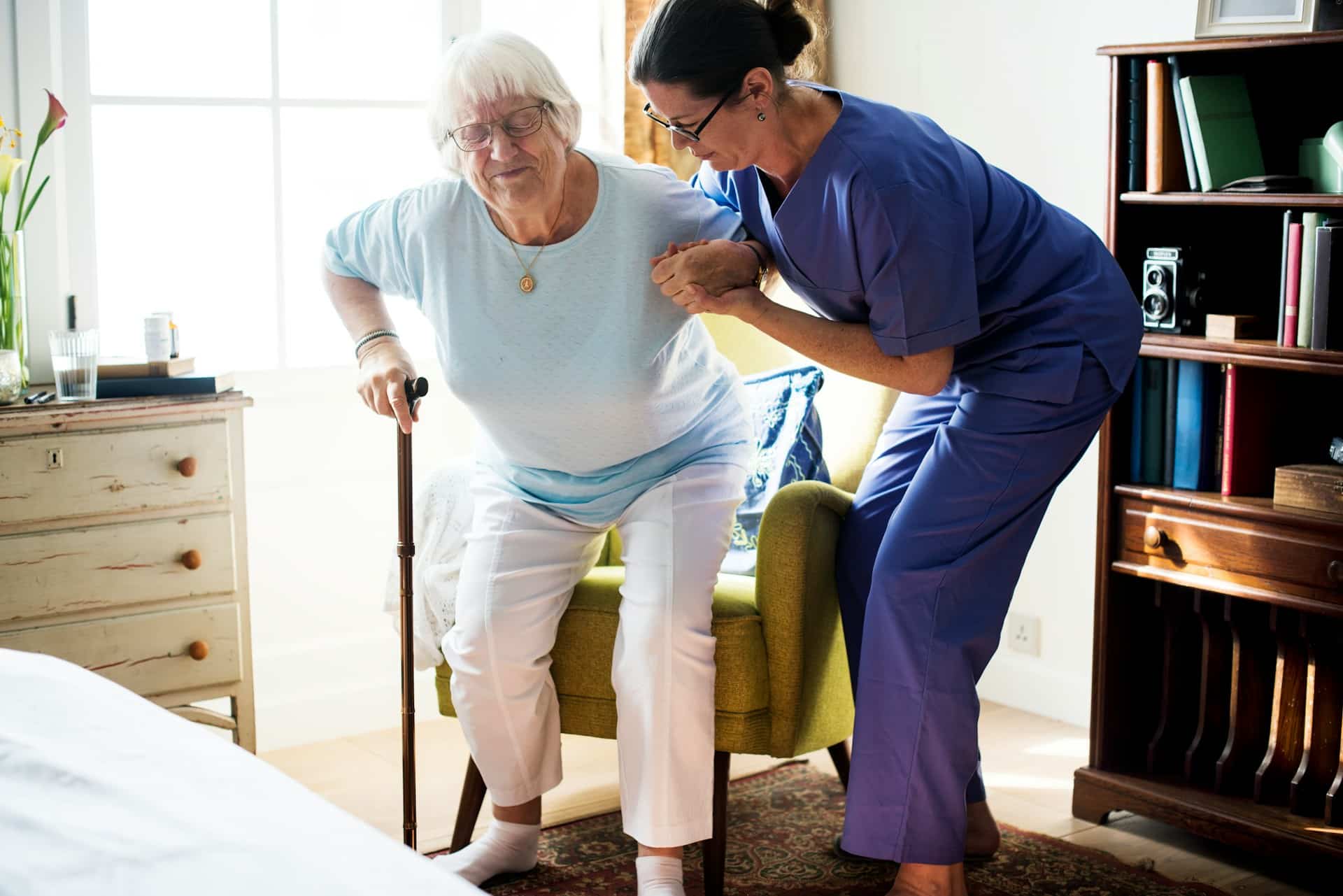Mobility problems are more than just inconvenient for people living in care facilities. If something goes wrong, they can lead to falls, injuries, or long stretches of being stuck in a bed or chair. For families in Little Rock trying to make sure their loved ones are getting the help they need, it’s frustrating to feel left in the dark or unsure if a facility is really meeting its responsibilities. This is especially true when that loved one can’t speak up or explain how they’re feeling.
It’s not asking too much to expect proper support and safety when someone lives in a place that’s supposed to care for them. That means having staff that understands how to help someone move safely, how to prevent pressure injuries, and how to notice when a resident might be at risk. When that doesn’t happen, families deserve answers. Knowing a bit more about mobility issues and what care facilities are expected to do can help people speak up when something doesn’t seem right.
Understanding Mobility Issues
Mobility issues can show up in a lot of different ways. Some people may be able to walk with a cane or walker, while others need a wheelchair or help from another person just to stand. These types of challenges don’t always stay the same either. A person might be mostly steady one month and then struggle the next because of medicine changes, illness, or just growing older.
In care facilities, the most common mobility-related risks include:
– Falls when trying to walk, stand, or transfer between bed and chair
– Skin injuries from sitting or lying in one spot too long
– Muscle loss from not moving enough
– Risk of getting isolated because of limited movement
Places like assisted living homes should be ready for these kinds of challenges. It’s part of the job to watch for small changes and respond before things get worse. That could mean reminding someone to use a walker even when they think they don’t need it, helping them change positions regularly to avoid bedsores, or making sure the hallways and rooms are clear of trip hazards. Even something as simple as moving personal items within reach can make a big difference.
When good mobility care is in place, residents tend to stay more independent, comfortable, and safe. Without it, they may end up in the hospital or worse. Families often spot these problems before anyone else. If your loved one starts to seem unsure on their feet, stays in one spot more often than usual, or has unexplained bruises, it’s time to ask questions. Not because you’re being pushy, but because that’s what strong support looks like.
Care Facility Responsibilities
Every care facility has duties they’re expected to take seriously. When a person can’t move like they used to, those responsibilities grow. Facilities are supposed to know each resident’s needs and create a plan that supports them day by day. That’s true whether someone only needs a hand with steps now and then or if they use a lift to get in and out of bed every day.
Here are some of the basic ways a care facility should help residents with mobility:
1. Conduct regular assessments to update the resident’s mobility plan
2. Offer equipment like walkers, grab bars, or non-slip flooring when needed
3. Train staff on safe movement techniques and injury prevention
4. Keep common areas clear and easy to move around
5. Respond quickly to requests for help with walking or transfers
Legal standards around all this can vary, but one thing stays the same: residents must be protected from avoidable harm. Failing to assist with mobility doesn’t just cause pain or loss of freedom. It can seriously damage someone physically and emotionally.
It’s also about respect. When a resident is left to struggle on their own or told they’re exaggerating their needs, they lose trust in the people meant to help them. For example, a woman in her 80s who was constantly asking for help to get to the bathroom was often told to wait. Over time, she stopped asking. Then she fell and fractured a hip.
Staff should never be too busy to care properly. If a facility accepts someone as a resident, they’re agreeing to meet all their needs, including helping them move safely each day. Watching for signs that these promises aren’t being kept is something family members can do to protect the people they care about most.
Recognizing Mobility-Related Neglect and Abuse
Mobility support isn’t just about walking aids and assistance. It’s about consistent attention, safety, and dignity. When that’s missing, families often begin noticing changes in both behavior and physical condition. Sometimes these signs are subtle, like a loved one who seems less talkative or more anxious. Other times, it’s more obvious, such as bruises or repeated falls that seem hard to explain.
Here are some red flags that may point to neglect or abuse:
– Unexplained injuries like scrapes, bruises, or sprains
– Sudden fear surrounding certain staff or times of day
– A loved one spending long hours in bed or a wheelchair without repositioning
– Soiled clothing or bedding that isn’t getting changed
– Staff delaying or avoiding requests for mobility help
– Caregivers brushing off concerns or changes in behavior
Neglect isn’t always loud or obvious. In many cases, it looks like silence and inaction. Maybe a resident waits too long for help to use the restroom. Maybe they’re told to sit tight when asking for help to get up. These delays may feel small in the moment, but they can lead to serious harm or emotional withdrawal over time.
Care facilities should be open about care plans and willing to talk through specific concerns. If you’re being met with vague answers, frequent excuses, or shifting stories, especially in relation to mobility or safety, you may be right to question what’s really going on.
What Families in Little Rock Can Do
If something feels off, it’s better to speak up early than to wait and wonder. You don’t need every answer to start asking questions. Even if it turns out to be a misunderstanding, raising the concern builds accountability. And if it’s something more serious, those early steps could help prevent injury or neglect from getting worse.
Here’s a good starting point if you suspect mobility issues are being ignored or handled poorly:
1. Document changes in your loved one’s behavior or health
2. Keep a written log of conversations with staff, including names and times
3. Take clear photos of visible injuries if possible and appropriate
4. Ask to review your loved one’s care plan and any mobility-related updates
5. Request a care meeting and bring specific observations to share
6. Pay attention to how staff responds. Honest concern should never be met with defensiveness
7. Get help from a legal professional experienced in care facility issues if you believe rights are being violated
No one wants to assume the worst, but silence doesn’t protect anyone. When something matters, like being able to move freely and safely, it’s worth checking in, asking questions, and if needed, pushing back.
Keep Asking, Listening, and Showing Up
Caring for someone in a facility doesn’t stop at drop-off day. Families and guardians have an ongoing role in making sure the care stays personal and respectful. That includes mobility needs, which can change fast and require more attention than facilities sometimes expect.
Ask how often staff reassess mobility goals. Check that assistive gear is clean, working, and used correctly. If your loved one says something feels wrong, slow down and listen. Sometimes that gut feeling is the first sign that something’s off.
The last thing families want is to look back and wonder if they missed clues. Staying hands-on doesn’t mean micro-managing staff. It just means showing up, paying attention, and being willing to step in when care goes sideways. No one can prevent every issue, but families who stay involved often spot troubles early and keep their loved ones more connected, comforted, and respected.
Fall in Little Rock is a time when caregivers inside and outside facilities are shifting routines, slowly heading into colder months. That makes it even more important to make sure loved ones are staying active and supported day-to-day. Whether it’s an extra walk down a hallway or help repositioning in bed, small moments of care can make a big difference. So can the people who choose to speak up when those needs aren’t being met.
If you’re worried about the care your loved one is receiving in a facility, don’t hesitate to take action. It’s important to ensure they get the attention and support they deserve. If you believe there are issues with how mobility needs or safety are handled, consider reaching out for legal support. The Law Office of Thomas G. Buchanan is here to help you understand your options and address potential negligence. Learn more about how our experienced assisted living lawyers can help you take the next steps toward protecting your loved one’s well-being.

